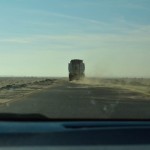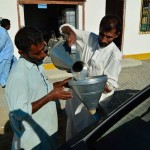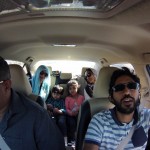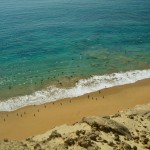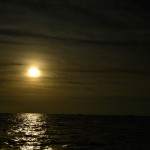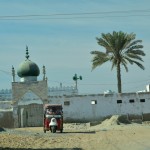It has become somewhat of a travel custom during our nine months of overlanding that we end up in the lesser known and perhaps even less enthusiastically visited places. So when Farhaan’s cousin Rahil bhai suddenly asked: “Gwadar chalna he?” (Do you want to come to Gwadar?) Farhaan automatically responded in the positive. We had only heard of Gwadar from Rahil Bhai as he is often there for business. We soon realised that there was much to see and even more about Gwadar that added to a new perspective on Pakistan’s development.

We drove from Karachi crossing a starkly contrasted densely populated metropolis towards the Makran coastal highway about a hundred kilometres away to an isolated semi desert. The drive is a roughly 650 kilometre stretch mostly along the Arabian Sea and runs through the Sindh and Balochistan provinces passing smaller port towns of Ormara and Pasni. What makes this drive most interesting though is that it passes through Hingol National Park, which is the country’s largest. It is mainly coastal semi-desert with the most intricate and unique rock formations that keeps your head moving constantly from side to side so you don’t miss any of it.

The rock formations intermittently give way to views of kilometres of unspoilt uninhabited beaches which reminded us a bit of Kosi Bay and surrounds in South Africa. At some points in the park one gets the sense that you are lost in a miniature version of the Grand Canyon. It is maze after maze of natural formations along steep and winding roads. Fauna includes a number of mammals, amphibians and birds including the Ibex, Urial (a sub species of wild sheep) and Gazelle.
Despite our best efforts, it was impossible to view any of the animals as the dunes and rock formations present ample opportunity to be furtive. Amongst the formations, some of the most popular include the well-marked “Princess of Hope” as well as another that resembles an Egyptian Sphynx.

The entire road is good tarmac with military check-posts and smaller villages spread about a couple hundred kilometres apart. The journey that takes 1 day today used to take 2 days a few years ago. The name Gwadar is made up of two words – ‘Gwa’ referring to wind and ‘dar’ meaning ‘door’. Thus Gwadar is the door of the wind. We were shown a deep cut in the hills of Gwadar which gave the city its name.
Located at the mouth of the Persian Gulf, this small fishing village was owned by Oman until 1958. Since then it has grown into a port city due to its unique hammer-head shaped peninsula protruding into the Arabian Sea. It has been earmarked by the Governments of Pakistan and China as the coastal start of the China Pakistan Economic Corridor (CPEC) and is therefore destined to become both a business and tourist hub of Pakistan within the next 10 years.
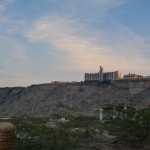
On our weekend visit we were treated to a stay at the Pearl Continental Hotel, tours of Gwadar and traditional Baloch lunch followed by a fishing trip. Pearl Continental Hotel is built on the edge of the hill that forms the Hammer-head shape, seen in the picture below. It boasts views of the sea on one side and the city of Gwadar on the other.
One of the main projects of CPEC is the building of a road that will link Gwadar to the Karakorum Highway in Khunjerab. This will allow Chinese imports from the Persian Gulf countries to travel to China through a sea, road and rail network over only 2000 kms instead of the current ship journey of 12900 kilometres.

If like us you are the kind of overland traveller, that is looking for picturesque, out-of-the-ordinary places that are not frequented by many travellers then Gwadar is the place to visit. It is however important to note that there this region is known to be dangerous for foreign travellers so try to get a Pakistani friend or tour guide to take you.

















